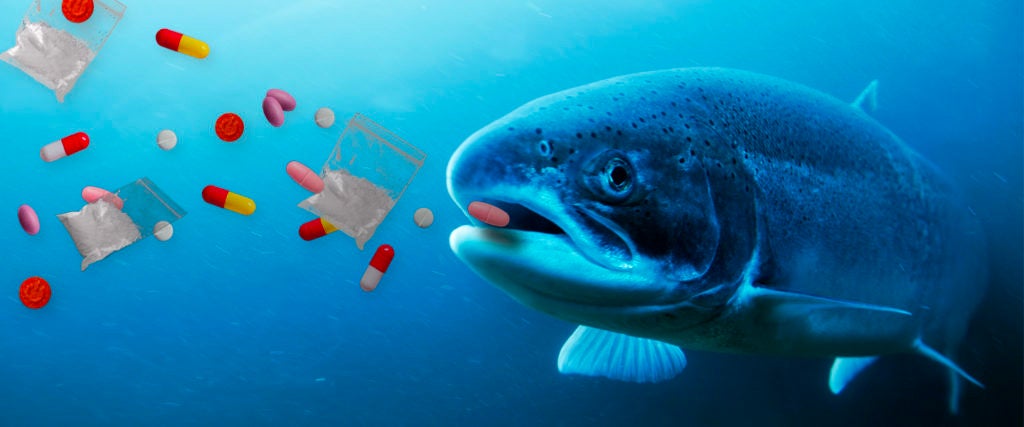I’m old enough to remember when mercury poisoning was the most fashionable fish-based public-health scare. “It is not known if any children in the United States have neurological defects or delays in mental development because of mercury contamination from their mothers’ bloodstreams,” the New York Times reported gravely in 2001. But a bad thing that isn’t known to have actually happened is no less bad.
The mercury scare combined many of the things Americans like best in their news — demonizing a food that had been previously considered healthy and safe; hand-wringing over the safety of pregnant women; and the poisoning of children. It was properly terrifying, and because I still had a child’s palate and fish was yucky to me, I got a lot of mileage out of it. Whether the grilled swordfish fillet on my plate really did contain an unsafe amount of mercury was immaterial to me, but whether it tasted like a nasty-ass piece of fucking fish — that was a matter of great importance.
Today, mercury levels in fish aren’t a source of as much controversy for us consumers, even though they’re no lower than they were in 2001. We have the fishing industry’s many representatives and lobbyists to thank for that — they feared that if we had too much detailed information about the mercury levels in our fish, we’d stop buying it. But even if we take the focus off mercury, we’re not out of the woods. The same fish who may be innocent of poisoning us with mercury are now getting addicted to meth and other drugs.
See, we humans enjoy amphetamines — not just recreationally, but in their FDA-approved form as a treatment for ADHD, too. We ingest, say, meth, and after many hours of feeling invincible and a thrilling night of rewiring the toaster oven seven times, we eventually piss and shit. Our meth-infused excretions journey through water-treatment facilities, which are trained to prepare sewage for its eventual odyssey into rivers and coastal waters — but not to filter the meth out first. As such, the fish in those coastal waters may be ingesting our Adderall-inflected sewage.
Meth isn’t the only drug whose influence on fish is coming to the fore, though it’s certainly the funniest in its miserable way. The unlucky fish who happen to live downstream of our sewage are also turning up with commonly prescribed antidepressants and antibiotics in their systems. We who live in the world now are fortunate enough to have access to more sophisticated medicines than any other population in history, but everything has a cost — and it seems that one cost of the most popular drugs available to us is their unbidden presence in our fish.
The presence of meth in fish is just another instance of unintended consequences that someone, somewhere, should have foreseen. It’s no different in spirit from the Great Pacific Garbage Patch or the disastrous heaps of discarded fast fashion in Ghana, except that the profit motive of filling fish with commonly prescribed drugs is a little hazier. Still, that haziness doesn’t mean there is no profit motive. The psychotropic drugs frequently found in fish, like amphetamines and antidepressants, have been overprescribed for years.
That’s not to say that nobody needs Prozac or Adderall, which many have found to be lifesavers. But insurance reimbursements are higher for such drugs than they are for other forms of mental health care, per Daniel Carlat, author of the 2010 book Unhinged: The Trouble with Psychiatry. For Americans in particular, who are largely more beholden to the whims of their health insurance providers than the members of any other society in the world, the course of treatment often follows insurance reimbursements when it should be the other way around. In short, doctors have a financial incentive to prescribe these drugs, and those of us who trust their judgment take the drugs in huge quantities. Antibiotics, too, have been overprescribed for years — at times, by as much as 33 percent. And they’re turning up in our fish now, too.
So where has all this prescribing led us?
To numerous places, many quite unpleasant: Famously, the carelessness with which doctors once prescribed opioids led not only to the opioid crisis, but to those same doctors’ newfound stinginess with painkiller prescriptions for patients who need painkillers. (When I had my first wisdom tooth out in 2012, my oral surgeon merrily prescribed me more Percocet than there are M&Ms in a pouch; when I had the others removed in 2017, I received precisely six Vicodin, and only when I insisted that prescription-strength Tylenol would be useless in the face of three bloody holes in my mouth.) The antibiotics that seem innocent enough at the time of prescription look much more sinister when they lead to mutated and antibiotic-resistant versions of common infections. And, of course, the literal runoff of all this stuff now appears as poison in our fish.
Given the choice between a meth-filled fish or a meth-free fish, most of us would probably opt to fry up the methless one for supper (although it must be said that common warnings advise against eating the fish in coastal waters in the first place due to just this sort of contamination). But the problems with drug-addicted fish don’t end on our dinner plates. It turns out that fish behave much the same way we do when we’re addicted to meth. Researchers in the Czech Republic noted that fish that had been exposed to methamphetamine and were then placed in meth-free waters moved much less than those that had never been exposed — as if they were experiencing the pain of withdrawal.
The implications are staggering. A fish whose fishy interests have been replaced with the finding and ingesting of meth may be less likely to dodge predators or breed the way its instincts would otherwise dictate. It could only take a couple generations of loitering at the point of sewage runoff in search of drugs for those fish’s numbers to plummet. At this point, can we really afford to lose more animals?
The whole situation smacks of apocalypse, even if it does offer us the darkly funny image of some trout jonesing for a fix just outside a water-treatment facility. I laugh at this because just about the only thing I can do is laugh. The more stark and obvious environmental injustice becomes, the more hopeless it feels — and this particular injustice feels especially hopeless because it stems from prescriptions that many of us really do need to survive. Not every person who receives a Prozac prescription ends up needing it for the rest of their life, but some do, and it’s got to be upsetting to learn that the medication used to keep you alive is also being ingested by fish against their will. Every action has consequences, but that’s an awfully dark consequence for an action that some people have no choice but to take.
I can’t even begin to think of a solution to this problem. Look: I’m neither a scientist nor a doctor nor a government official. That’s not my job. Prescribe less, sure, but then again, doctors do prescribe fewer opioids now than they did at the start of the opioid crisis, and that had unintended consequences, too — as previously mentioned, people who need opioids often can’t get them anymore. Build a healthier society holistically, so that people’s basic needs are supported and fewer of them are forced to look for pharmacological solutions to their problems? Sure. Sounds great. Let me know when that’s happening and I’ll be there.
In the meantime, I’ll be eating fish. As always, I’ll be doing my best to source that fish as ethically as I can, so that the animal I’m eating isn’t totally disrespected by its presence on my plate and so the people who caught it for me weren’t worked within an inch of their lives in doing so. These are the things I’ve been taught to worry about, so I guess I might as well add one more worry to that list: meth fish.
Let me know which hyper-ethical, intimidatingly knowledgeable fishmonger figures out the solution to this one.

